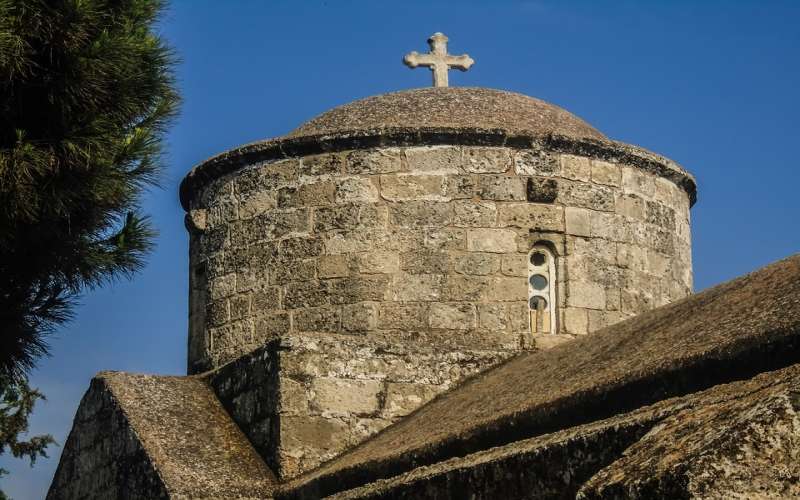Church of Virgin Mary in Paralimni
The inhabitants best know the church with the name "Saint Anna", which was given, perhaps, when it was extended to its present form
The church of Panagia is located in the center of the Municipality of Paralimni. The original church, small in size but impressive and devoted, belongs to the 13th century. The inhabitants best know it with the name "Saint Anna", which was given, perhaps, when it was extended to its present form.
One-lane at its original stage, cruciform inside with a dome, is a stong evidence of the Orthodox Byzantine tradition, although it has received elements of Gothic architecture, reminiscent of the Frankish occupation of our island.
The original church, built in the isodomous system with stones from the area, was internally hagiographized on all surfaces. These hagiographies have been totally destroyed and only traces of them show the old grandeur. A couple of hagiographies that are preserved - Archangel Michael on the north wall, Christ and the Hierarchs on the east - are certainly much younger and not of the original quality.
Instead of the hagiographies, today the church is decorated internally with new-era embedded colorful dishes, placed in formations.
The arch of the sanctuary is semi-cylindrical and has a monolithic window. Also, in the cylindrical drum of the dome, four single-sided windows illuminate inside the church.
The wood-carved iconostasis of the church is a good creation of the 17th century. There are two large portable icons that adorn it which belong in the 17th century, the Savior Christ and the Virgin Mary. The twelve figures of the Apostles, which also decorate the iconostasis, are of a younger age.
The crucifixion that crowned the top of the iconostasis, as well as the crucifixes at the base where also done in the 17th century. These depictt he hierarchs Athanasios, Cyril, James and Ermogenes below and above is the Annunciation of the Virgin.
When the capacity of the temple was considered insufficient to serve the growing population, it expanded. A southern aisle was added, as well as an all-around arch on the western side. So part of the church enclosure, which was used as a cemetery, was found in the church.
Nowadays, several valuable examples of Orthodox ecclesiastical and cult tradition (icons, gospels, moons, ecclesiastical books, sacred vessels, candles, candlesticks, candelabra, etc.) are kept in the church and function as a small Christian museum.
For more information, see on the website: http://www.agiosgeorgiosparalimniou.org.cy/naoi/agiaanna.html

 English
English
 Ελληνικά
Ελληνικά Русский
Русский